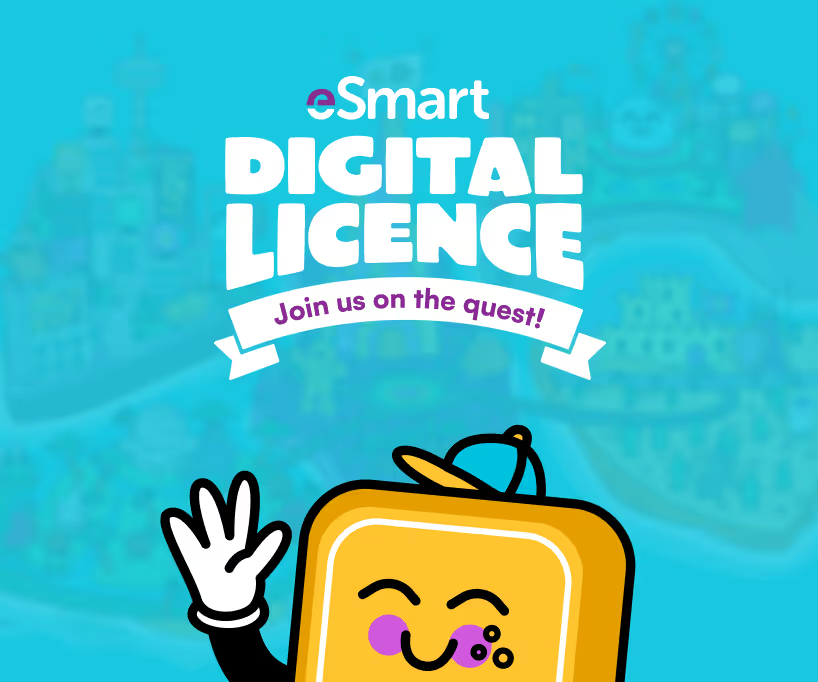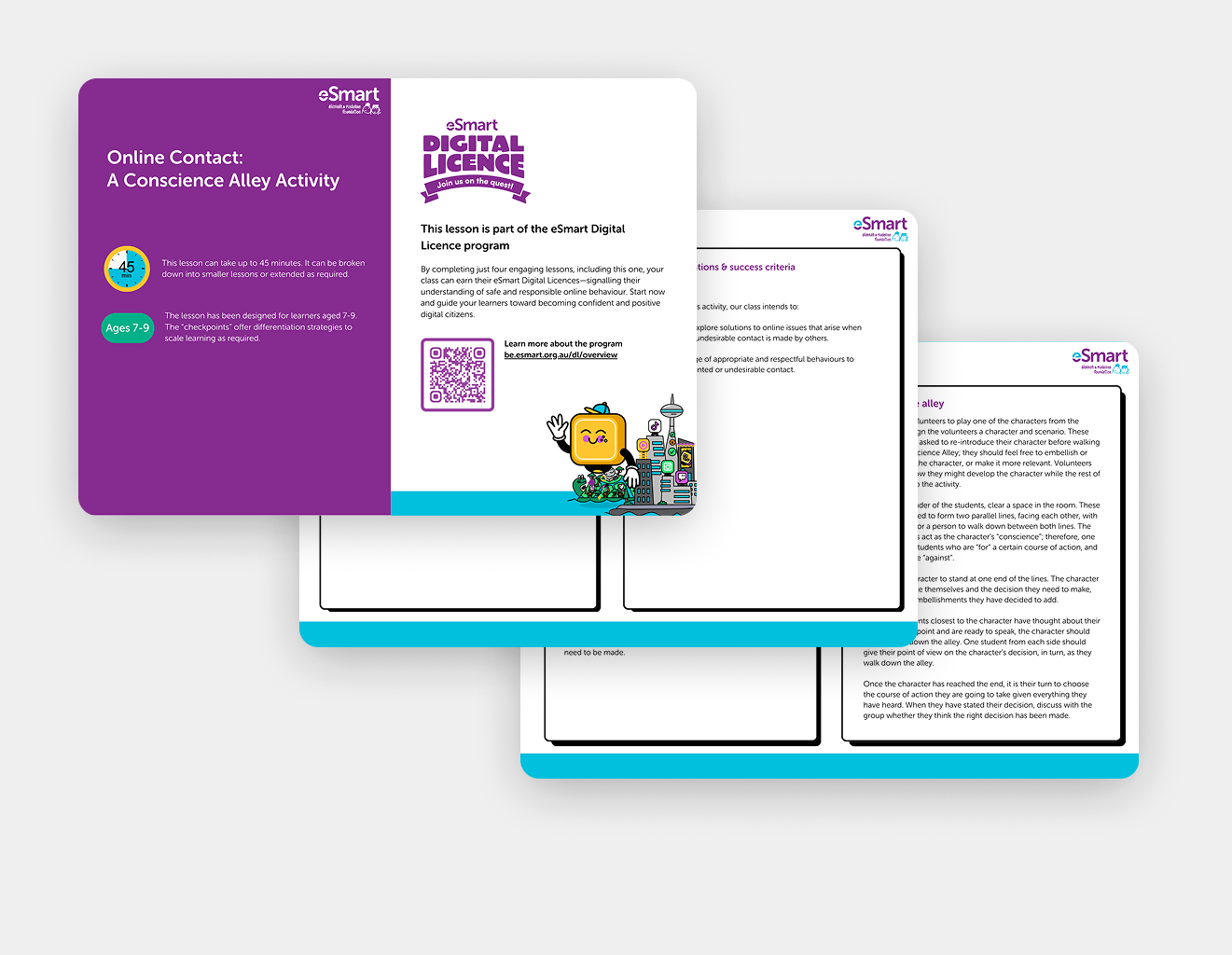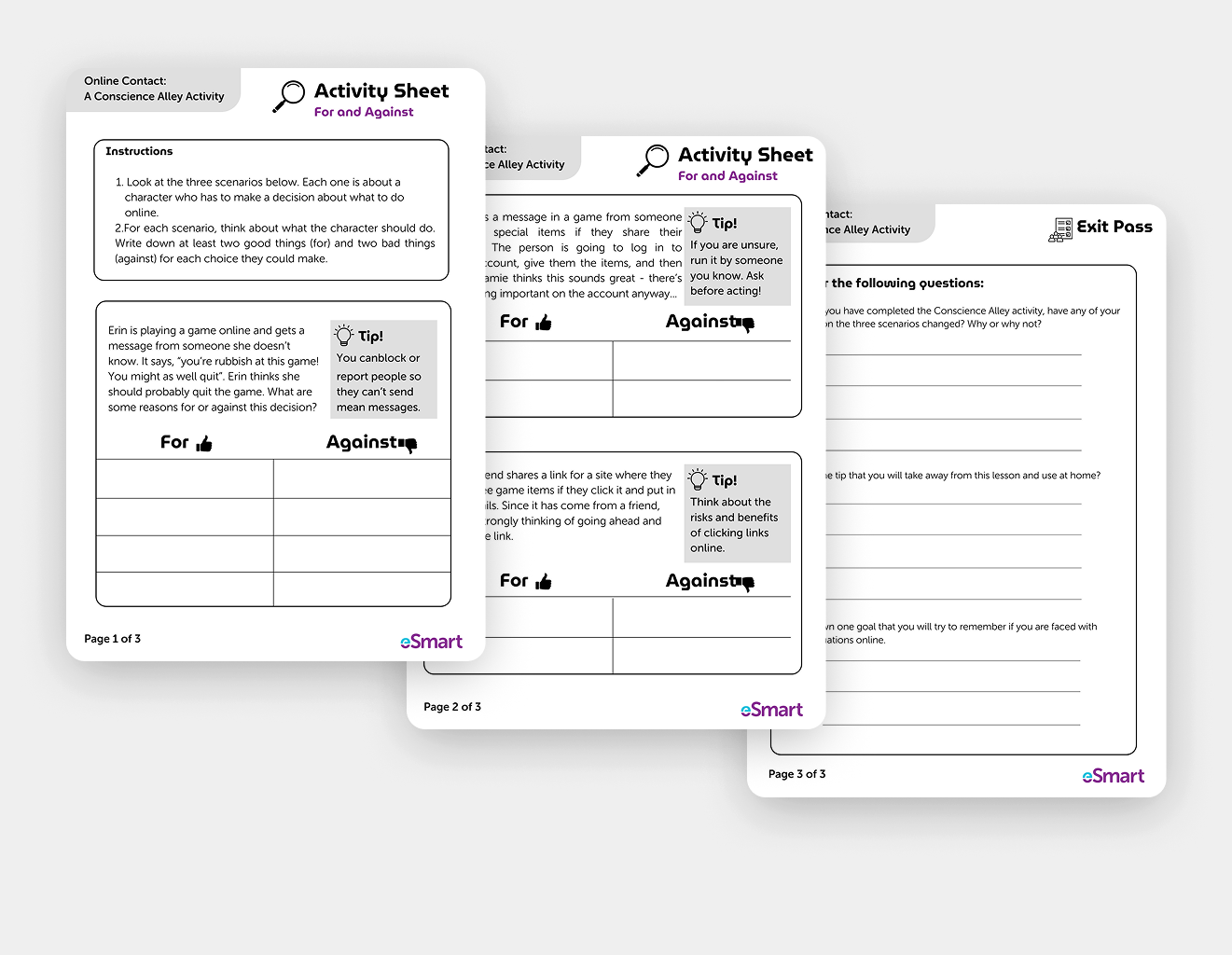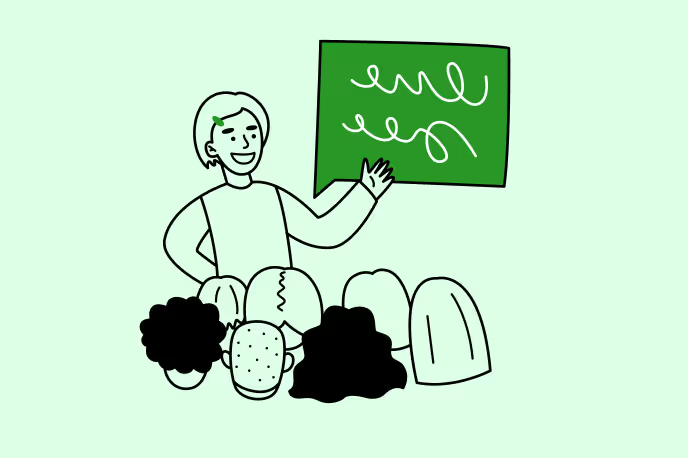Download Lesson Pack
Online Contact: A Conscience Alley Activity

Child Safeguarding Statement
Some resources and activities may prompt a child to remember and potentially share an experience of harm. Make sure you’re familiar with your school's safeguarding policies and procedures so you can confidently report safety and well-being concerns.
Prepare students for the session by discussing: their right to be safe and respected; what to do if discussing online safety makes them feel uncomfortable or unsafe; and how to seek help if they feel or have felt unsafe. Use this resource available on the website.
Online Contact: A Conscience Alley Activity
In this activity, students explore problems and decisions faced online. It encourages boundary-setting, respectful interactions, and assertiveness for online safety.
Lesson Details
Contact
About this Risk Area
When potentially harmful contact is initiated by others online, including strangers who may pose risks such as exploitation or identity theft.
Example topics:
- Online privacy and security practices, including setting strong passwords and managing privacy settings.
- Recognising and responding to online threats, such as phishing scams and identity theft.
- Establishing boundaries for online interactions and understanding the risks of sharing personal information online.
- Seeking help and reporting inappropriate or harmful online behaviour to trusted adults or authorities.
The resources for this risk area support learning in relation to safe online communication, privacy settings, and establishing boundaries for interacting with others on the internet.
In this activity, students explore some of the problems, dilemmas, and decisions that can be faced in online environments. By offering an opportunity to consider a range of options in relation to online safety, the activity encourages boundary-setting, respectful interactions, and the importance of assertiveness in online spaces.
Learning Intentions
By completing this activity, our class intends to:
- Discuss and explore solutions to online issues that arise when unwanted or undesirable contact is made by others.
- Identify a range of appropriate and respectful behaviours to counter unwanted or undesirable contact.
Curriculum Alignment
CASEL Framework
The CASEL Framework creates a foundation for applying evidence-based, Social and Emotional Learning (SEL) strategies both at school and in the broader community. Its aim is to support the cultivation of SEL skills and environments that advance students’ learning and development.
- Relationship skills: The abilities to establish and maintain healthy and supportive relationships and to effectively navigate settings with diverse individuals and groups.
My Time, Our Place – Framework for School Age Care in Australia
The aim of My Time, Our Place: Framework for School Age Care in Australia (the Framework) is to assist educators to provide children and young people with opportunities to maximise their potential and develop a foundation for successful lifelong learning. The Framework has been designed for use by approved providers and school age care educators working in partnership with children and young people, their families and the community, including schools.
Outcome 2: Children are connected with and contribute to their world.
Children develop a sense of belonging to groups and communities and an understanding of the reciprocal rights and responsibilities necessary for active community participation.
This is evident when children:
- Communicate and demonstrate an understanding that they are a part of a world that shares and communicates using digital technologies.
- Demonstrate an ability to share and respect others’ use of digital technologies.







